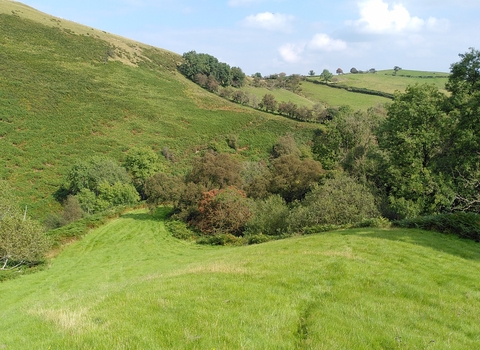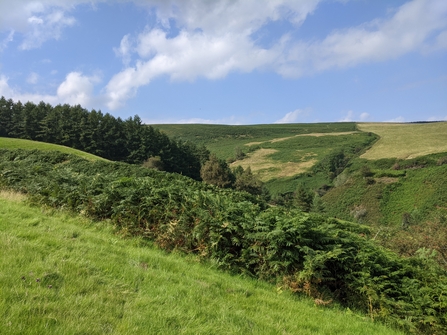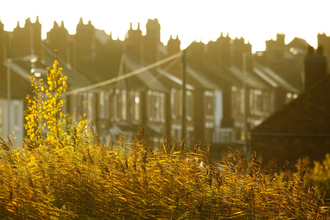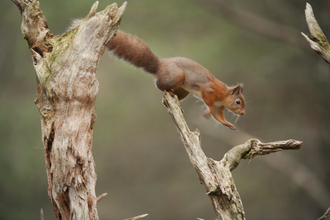What needs to happen?
The Wildlife Trusts are calling for at least 30% of our land and sea to be connected and protected for nature’s recovery by 2030. Making more space for nature to become abundant once again will give our struggling wildlife the chance to recover and also restore beautiful wild places - places that store carbon and help to tackle the climate crisis.
What are we doing?
The Wildlife Trusts’ new programme, Transforming Nature’s Recovery, seeks to address these challenges. Find out more about our major landscape recovery programmes.
Peak District nature recovery
Ughill Farm is a pioneering landscape recovery project covering a vast 132 hectares, and forms a key component of the larger nature recovery plan for the city of Sheffield.
Sheffield & Rotherham Wildlife Trust will champion nature-friendly farming while creating a vital buffer and expansion for the Eastern Moors Site of Special Scientific Interest (SSSI) and Special Protection Area (SPA). The diverse terrain includes a mix of improved and rough pasture, lush woodland, meandering stream corridors, and an ancient quarry. The project will provide a lifeline for declining upland breeding birds, such as curlew, lapwing, and snipe. By combining innovative farming techniques with ecological restoration, Ughill Farm aims to become a haven for wildlife, a thriving landscape for sustainable agriculture, and a beacon of hope for the preservation of precious natural heritage.
River Severn catchment nature recovery
New funds from the Ecological Restoration Fund will complement the work of several Wildlife Trusts to help nature recover across the Seven flood plain. This includes providing nature-friendly farm advice across this huge area.
Existing habitat improvement and wetland restoration projects across the River Severn catchment include:
A 60-mile woodland connectivity project, with funding from Defra, spanning Worcestershire, Herefordshire and Gloucestershire.
Funded by Defra, Eelscapes is a landscape-scale nature recovery project set in one of the UK’s most important river systems. Gloucestershire Wildlife Trust, WWT, land managers and the Environment Agency are creating a series of wetlands along the Severn Vale corridor. The vision is to restore naturally functioning wetlands that support iconic and threatened species including European eel and true fox-sedge, while generating sustainable business opportunities for land managers, and benefiting communities. Baseline ecological surveys are being undertaken across the project area, including eDNA surveys for European eel.
The National Lottery Heritage Fund has funded an ambitious project to improve habitat for wildlife along the River Sherborne and celebrate its cultural heritage.
The RSA is funding nature interventions to reduce impacts of flooding in Gloucestershire.
Hadrian’s Wall corridor
Working with farmers and communities from coast to coast, including in and around Newcastle and Carlisle, to develop and implement a vision where nature recovery provides a secure future for farming and improves quality of life for urban and rural communities. Ecological restoration will create a more naturalistic and even more attractive backdrop to the World Heritage Site of Hadrian's Wall, contributing to the visitor experience and benefitting tourism, which is critical to the local economy. Activity by The Wildlife Trusts will be focussed at the eastern and western ends of the Wall.
Archer’s Green
Archer's Green is a 20-acre nature recovery project that will serve as a crucial wildlife corridor, connecting Tewinbury Nature Reserve to Panshanger Park in the Mimram Valley. Work will help to restore flower-rich grasslands and help plants including Whorl-Grass, Marsh Valerian, harebell, and Marsh Ragwort. Protecting Archer’s Green will also help to conserve the Mimram River, a rare chalk stream of international importance. There are only 240 chalk streams left in the world. Supporting water voles, yellowhammers, grey partridges, and skylarks, Hertfordshire and Middlesex Wildlife Trust aims to safeguard Archer’s Green a haven for wildlife – and a chirping oasis for future generations.
Pentwyn
A landscape recovery project across 164 acres in the heart of the Welsh Marches and the upper reaches of the River Lugg (SSSI). Work is underway to restore natural processes and create new wetlands, scrub, and woodlands, enabling wildlife to recover. Plans for Pentwyn include establishing a mosaic of species-rich grasslands for butterflies like the small-pearl bordered and marbled white, and benefitting birds including curlews, whinchats and hen harrier. Delicate plants like the common spotted orchid, marsh marigold, and mountain pansy will emerge from long-dormant seedbanks, thanks to the work of foraging pigs and free-ranging Belted Galloway cattle.
Temperate rainforest restoration
Our rainforests have been largely destroyed over hundreds of years and now cover less than 1% of Britain. The ambitious programme, largely funded by £38 million from Aviva, will see temperate rainforests restored and expanded in areas where they used to grow along the damper, western climes of the British Isles. The first sites are in the Isle of Man, North Wales and Devon. Funding from the Ecological Restoration Fund will support farmers to plant rainforest, restore rainforest fragments and support rainforest establishment on land acquired by The Wildlife Trusts.
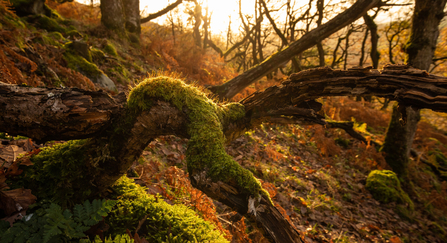
Deadwood and moss in a UK rainforest © Ben Porter
Peatland restoration in Northern Ireland
Northern Ireland peatland recovery network is working with farmers and landowners in Counties Fermanagh and Tyrone to restore some of the most iconic, biodiversity rich and culturally significant upland and lowland bogs in Northern Ireland, and to develop shared learning sites demonstrating best practice in nature's recovery.
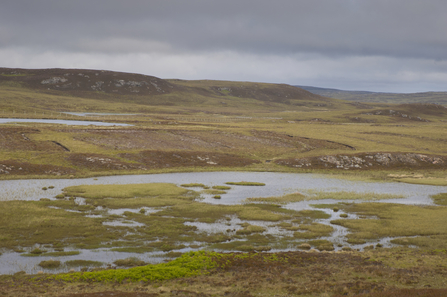
Rob Jordan/2020VISION
Wilder Marches
An ambitious nature recovery project spanning two countries, four counties and three major river catchments. Wilder Marches is a partnership between four Wildlife Trusts to create and restore wilder areas over 500-hectares along the English-Welsh border. The area is dotted with ancient woodlands, heathlands and peatland, flower-rich meadows, wood pasture and ‘ffridd’, an upland habitat of scrub and grassland. Wilder Marches aims to enable a network of estates, farms, nature reserves and commons to help nature recover at scale.

